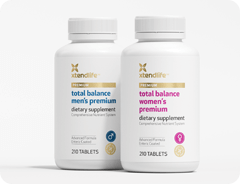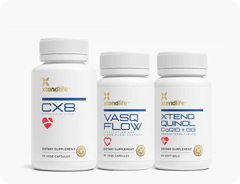We‘ve all heard the common saying ‘eat your greens’ when growing up. Some of us have heard this on more than one occasion and some of us are still being told. It is very important to ‘eat your greens’ as many of the essential nutrients the body requires daily come from our five-plus a day. Fruit and vegetables are rich in a variety of nutrients including fiber, vitamin C, vitamin A, potassium, magnesium, calcium, iron, beta-carotene, b vitamins, antioxidants and so much more. These are the superfoods of life and serve so many benefits to humans.
Did you know in 2013 approximately 80% of Americans did not consume enough fruit or vegetables daily to meet the US dietary recommendations?
Benefits of Eating Your Fruit and Vegetables
Consuming the recommended daily intake of fruit and vegetables consistently is the best way to maintain optimal health and well-being. Some benefits that may be experienced from this include regular bowel movements, reduced risk of degenerative conditions, more energy, healthy blood cholesterol, and blood glucose support. Some other benefits include weight management, improved immunity, and overall improved vitality and wellbeing.
Fiber
Fiber is an important component of our daily nutrient intake and serves many health benefits including digestive tract health and function. Fiber is naturally found in plant-based foods and is broken down into two forms insoluble and soluble. Soluble fiber absorbs fluid and makes the contents of the bowel softer and helps it to move easier while insoluble fiber provides bulk to the bowel contents.
Fiber is also great for attaching to toxins in the digestive tract and excreting these from the body. Eliminating such toxins may be helpful in reducing the risk of degenerative diseases in the digestive tract.
Sources of Fiber
The recommended daily intake of fruit and vegetables for children and adults is two servings of fruit and three servings of vegetables per day. This can be easily achieved if you incorporate these into your meals throughout the whole day.
Fruit: pear, kiwifruit (Chinese gooseberry), apple, stone fruit (peaches, apricots, plums) citrus fruit (orange, grapefruit), and berries (blueberries, strawberries, raspberries).
Vegetables: broccoli, brussels sprouts, carrot, potato, sweet potato, asparagus, green beans, kale.
Wholegrains: grainy breads, cereal, buckwheat, quinoa, oats, whole-wheat pasta, brown and white rice.
Legumes: lentils, beans, green peas, soybeans.
Nuts and seeds: peanuts, sunflower seeds, almonds, walnuts.
Superfood Spotlight: Kiwifruit
This is a powerhouse superfruit packed with fiber, vitamins, minerals, antioxidants, and more. This fuzzy brown fruit, also known as the Chinese gooseberry, contains soluble fiber to help regulate bowel movements and phenolic compounds to naturally balance the good and bad bacteria in the digestive tract. Kiwifruit also naturally has digestive enzymes to support good digestion and food breakdown as well as vitamin C to support the health of the skin and boost immunity.
Kiwi-Klenz is a wholefood prebiotic containing whole kiwifruit including the skin which is high in phenolic compounds. This supplement is perfect to take to support the digestive tract, remove unwanted toxins from the body, and increase the absorption of nutrients from food and supplementation in the diet.
Below I have included some tips on how you can increase your daily fruit and vegetable intake.
1. Cut raw vegetables and fruit into bite sizes and keep them in a zip-lock bag for on-the-go. Eg. apple, carrot, and celery.
2. Prepare your meals and snacks on the weekend, so you have food ready to go during the week. This will reduce the temptation of buying low-nutritional food.
3. Eat the rainbow! The more color you eat, the more nutrients you will be nourishing your body with. Try and include a variety of colors per meal to mix it up.
4. Half-fill your dinner plate with vegetables or salad before adding other components.
5. Add a handful of dark leafy greens such as spinach to your morning smoothie. This will give it some added protein to keep you fuller for longer and one serving of vegetables will be done and dusted!
6. Clear out your fridge and eliminate foods you tend to eat more instead of fruit and vegetables. This way, when you want to snack, you will only have healthy options to choose from.
7. Shop the perimeter of the supermarket. This way you will be more tempted to fill your shopping cart with fruit, vegetables, and whole foods instead of low-nutrient foods such as muesli bars, biscuits, and candy.
8. Grate courgettes and carrots into homemade hamburgers for the kids. They won’t even know it’s there!
Below is a delicious mango superfood smoothie recipe rich in soluble and insoluble fiber, omega fatty acids, vitamins, minerals, antioxidants, and more. This is great for boosting digestive health and overall vitality.
Mango Superfood Smoothie

Ingredients:
½ of one mango (can be fresh or tinned and in its juice)
1 whole kiwifruit (no skin)
Small handful of spinach
1 cup coconut water (add extra coconut water if you prefer a thinner consistency)
1 tablespoon of chia seeds
1 tablespoon of ground linseed, sunflower seed, and almond (LSA)
1x Zupafood Greenz sachet
Method:
1. Add all ingredients into a blender and blend on a medium/high setting.
2. Serve cold and enjoy!
Adding Zupafood Greenz to your smoothie will give it a nutrient boost as this contains a superfood blend of apple, grape, and kiwifruit, as well as a green superfoods blend including organic chlorella, spirulina, barley grass, and wheat grass. Zupafood Greenz is great for boosting immunity, supporting the removal of toxins, and supporting alkalinity in the body.
Share your tips and tricks below about how you ensure you fit in your five-plus a day of fruit and vegetables!


 Supplements
Supplements Bundles
Bundles










